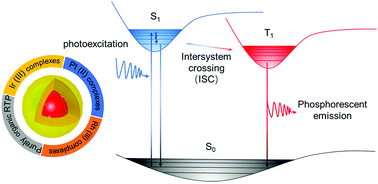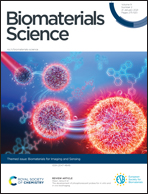The development of phosphorescent probes for in vitro and in vivo bioimaging
Abstract
Phosphorescence is a process that slowly releases the photoexcitation energy after the removal of the excitation source. Although transition metal complexes and purely organic room-temperature phosphorescence (RTP) materials show excellent phosphorescence property, their applications in in vitro and in vivo bioimaging are limited due to their poor solubility in water. To overcome this issue, phosphorescent materials are modified with amphiphilic or hydrophilic polymers to endow them with biocompatibility. This review focuses on recent advances in the development of phosphorescent probes for in vitro and in vivo bioimaging. The photophysical mechanism and the design principles of transition metal complexes and purely organic RTP materials for the stabilization of the triplet excited state for enhanced phosphorescence are first discussed. Then, the applications in in vitro and in vivo bioimaging using transition metal complexes including iridium(III) complexes, platinum(II) complexes, rhodium(I) complexes, and purely organic RTP materials are summarized. Finally, the current challenges and perspectives for these emerging materials in bioimaging are discussed.

- This article is part of the themed collection: Biomaterials for Imaging and Sensing


 Please wait while we load your content...
Please wait while we load your content...